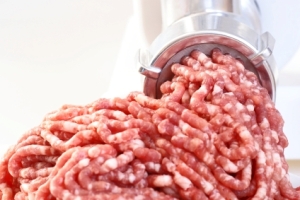 Pink slime has been making headlines a lot lately. As most consumers are learning the truth about the food they’re putting in their mouths, the government is apparently getting nervous.
Pink slime has been making headlines a lot lately. As most consumers are learning the truth about the food they’re putting in their mouths, the government is apparently getting nervous.
If you haven’t read the truth about this product called pink slime that is making up the majority of the meat served in this country, you should really inform yourself.
Microbiologist Carl Custer gives an excellent definition of pink slime. Custer explains how the substance is primarily connective tissue and gristle, the texture is simply manipulated mechanically and the flavor altered chemically to fool you into thinking it’s meat.
“It’s not meat. We call it Soylent Pink,” Custer said, who has worked with the Food Safety Inspection Service for 35 years.
Pink slime, or Soylent Pink, is heavily contaminated with E. Coli, Salmonella, and many various bugs. These bacterias are the reason the product is treated with ammonia. Once the product is soaked in ammonia is it then considered safe for consumption.
As Americans were enlightened to this meat product and as they were made aware that most restaurants used pink slime, companies reacted. McDonald’s, Taco Bell, and Burger King have all recently stopped using pink slime. Americans are demanding more from their food and we are wanting to know what is truly going in our bodies, which makes pink slime unacceptable.
However, despite the nation’s outcries over pink slime, our government still deems it acceptable for our children. The government just bought 7 million pounds of pink slime for the school lunch program.
Due to the dissatisfaction with eating ammonia treated “meat,” consumers are speaking out and this is surely making it harder for organizations to serve food at the lowest cost. In response, several states are now passing Ag-Gag bills. These bills make it unlawful to expose how our food is made. This is awful news. Apparently, the government wants to protect the bottom line over our health and our right to choose what we put in our bodies.
Do your very best to know where your food comes from, buy local, and prepare your own meals. If not, we may end up eating something worse than ammonia treated scraps.
Also Read:
Protein Rich Meat Alternatives
